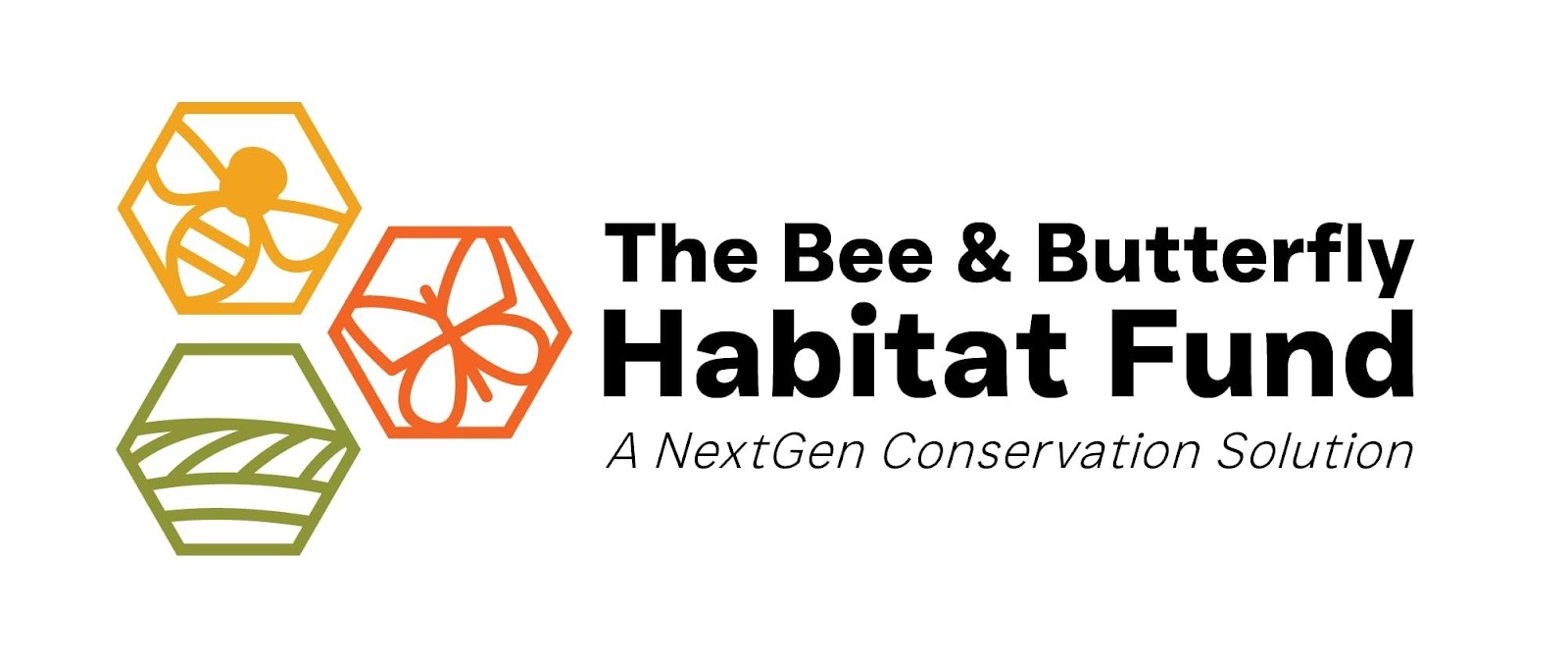Since 2017 the Bee and Butterfly Habitat Fund (BBHF) has brought unwavering focus to the field of habitat creation for pollinators, specifically for honey bees and monarch butterflies, by providing free or drastically reduced pollinator seed mixes to program participants.
What began as a dedicated group of beekeepers, wildlife biologists and researchers concerned with ever-diminishing pollinator habitat, has blossomed into a 12-state program in the upper Midwest that is transforming swaths of land into vibrant habitat and foraging grounds.
In a recent conversation with Kinute, biologist Elsa Gallagher, habitat program director for BBHF, highlighted why this region of the country is of particular importance. “There's not a lot of great habitat still out there that used to be in the Great Plains region, especially,” she said.
“When I was a young biologist going out to South Dakota, you would see prairie and … now you drive through those same areas, and you see more monocultures grown. It's provided a dearth of habitat … for any of the pollinators.”

Elsa Gallagher on site at a pollinator planting. Courtesy of The Bee and Butterfly Habitat Fund
Currently, beekeepers are experiencing an average annual hive loss of 40-50%, and monarch butterfly population has fallen up to 80%. Given these staggering statistics, it’s clear that the time for action is now, and that’s just the challenge that BBHF is rising to meet.
The Bee and Butterfly Habitat Fund serves pollinators in cooperation with private landowners, businesses and corporations through projects that dedicate 2 or more acres to habitat creation.
Gallagher noted that the program participants BBHF works with often approach the project with a genuine dedication to the cause—undertaking site preparation to ensure success, and frequently participating in the program for longer than the requisite 5 years.
Additionally, the transitioning landscapes tend to garner attention from neighbors and friends, which in turn are inspired to be a part of the solution of habitat creation on their own lands. It is this type of enthusiasm that is enabling BBHF to continue to grow—the organization is poised to continue expansion within the Midwest.
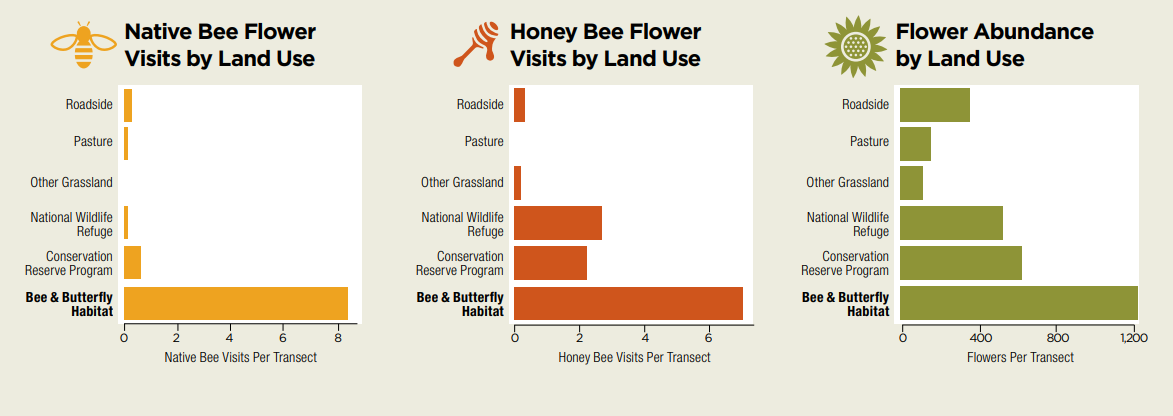
Results from U.S. Geological Survey research projects. Courtesy of the Bee and Butterfly Habitat Fund
A sterling example of sharing this enthusiasm for the program is a participating Minnesota beekeeper whose site boasted an impressive array of blooms after only 14 months in the program. Since beginning participation in the Seed a Legacy program in 2019, that landowner has hosted several tours to showcase the success he’s realized on the land.
However, one of the most notable successes was the arrival of pheasants on the property two years after transitioning the land, which he had never observed prior. “That's a testament that it's not just pollinator habitat, it's good wildlife habitat,” Gallagher said.
In the following interview, Gallagher walks us through the creation of this critical habitat, the program’s realized successes, and hints at what’s on the horizon for the Bee and Butterfly Habitat Fund next.
Q: BBHF states that the Midwest is a critical area for honey bees and other pollinators, why does this area stand out?
A: The Midwest is especially important to the monarch butterfly because of the migration route they use from their wintering grounds in Mexico. The upper Midwest provides critical forage for honey bees when they are not pollinating the crops you see in the second map.
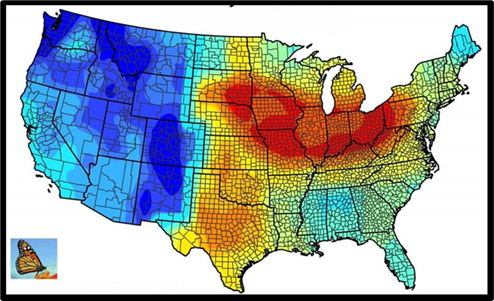
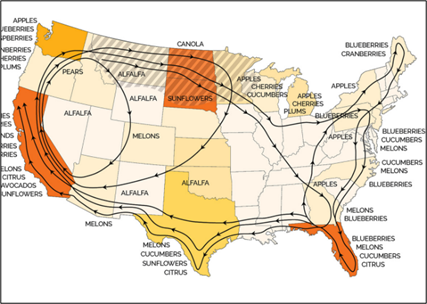
BBHF provides species appropriate forage for honey bees, monarchs and native pollinators. How and why do seed mixes vary within the 12-state region that you currently serve?
Each geography will have different soil types, rainfall, and growing conditions. We develop each of our two seed mixtures by state, and we further will “tweak” seed mixtures based on local conditions. A wet area will need a vastly different seed mixture than a very dry, sandy area. Our NextGen Conservation seed mixtures are unique in that we include 40+ species of native plants in the Monarch Mix and we include several species of bumblebee and honey bee-friendly species in the second mixture. The Monarch Mix and the Honeybee Mix are not mixed planted together, they are planted separately, and they meet the needs of different pollinators.
One of the objectives of the Seed a Legacy program is to, “Demonstrate how pollinator habitat can provide benefits for a wide range of important considerations like water quality, soil health, grassland songbirds, honey production, etc.” How does pollinator habitat benefit water quality and soil health in particular?
Versus a monoculture like fescue or brome, a diverse mix of natives will have vastly superior root systems that sometimes go a deep as 20 feet. This improves your groundwater, reduces compaction and improves water infiltration.
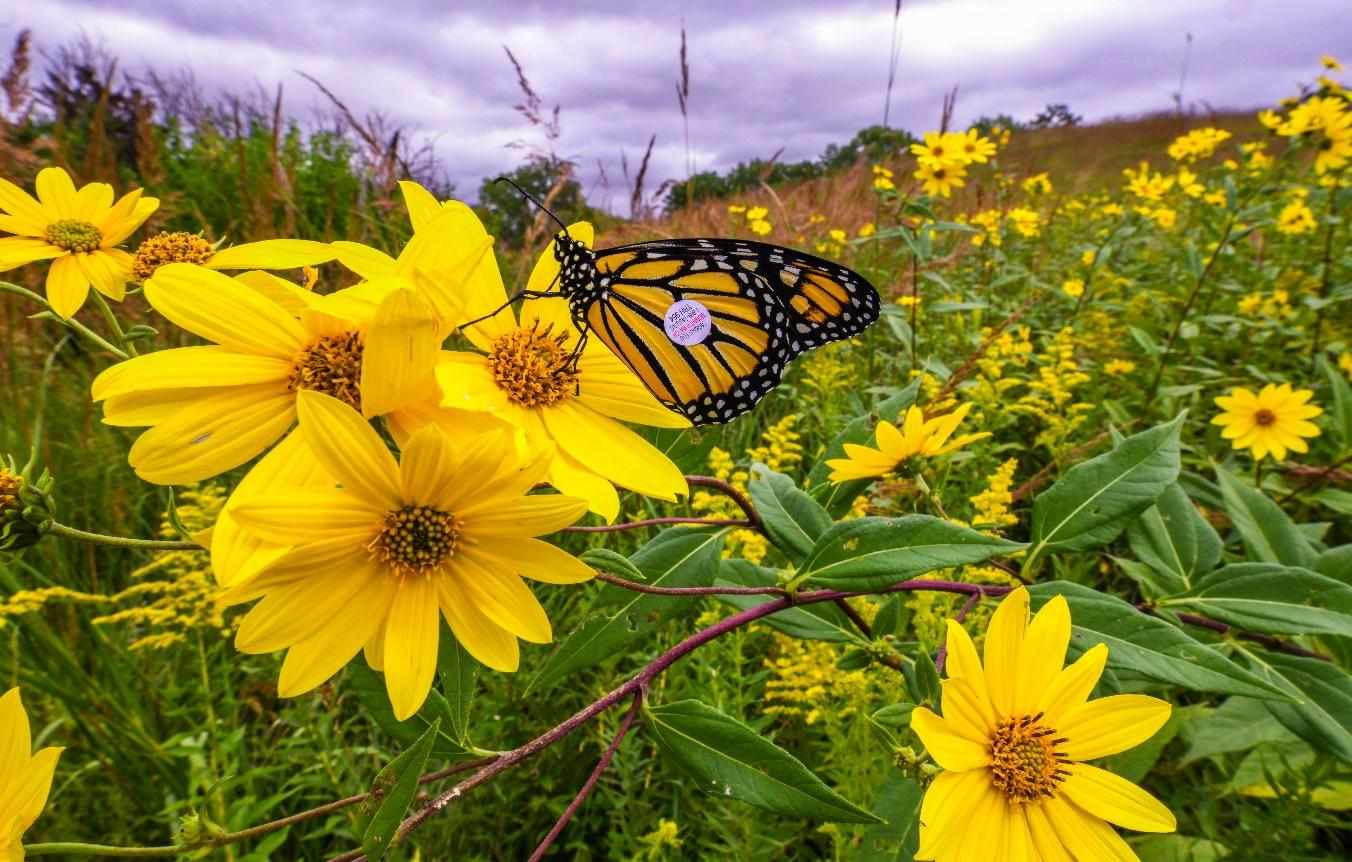
A monarch on a tickseed sunflower. Courtesy of the Bee and Butterfly Habitat Fund
Tell us about the support you provide to program participants to ensure a project’s success.
We work one-on-one with our cooperators to determine their goals and objectives to help them be successful. We set realistic expectations (the first year and second year of a planting can look “ugly” before the native wildflowers start blooming) – we say, “the first year is sleeps, the second, it creeps and the third, it leaps.” We help them to understand how to do the most important part of the program – site preparation – and how critical that is. Then we assist with guidance on seeding and maintenance of the planting in the ensuing years. We provide webinars and have a great guide called the “Pollinator Habitat Establishment Guide” available for free on our website.
Why is proximity to an apiary and honey production a consideration for these projects?
Because we were founded by beekeepers and wildlife biologists, one of our co-equal concerns is providing high quality honey bee forage. We have found that the honey bee mixture provides incredible benefits to our native bumblebees! One of three bites of food you take in happens because of pollination – coffee, avocados, blueberries, almonds are just some of the food items that we’d lose if we didn’t have pollinators.

Courtesy of the Bee and Butterfly Habitat Fund
BBHF states that “There is room for conservation on every farm and ranch in the country.” How does the use of herbicides and pesticides in conventional farming affect the potential success of establishing new forage habitat for pollinators?
We work effectively right next to agriculture. If the farmer is using the best management practices and not over-spraying and reducing drift, we do not see issues on sites that are adjacent to commercial farming operations. In fact, we work closely with a few farmers that have some nice pollinator plots on their farms.
BBHF reports that “Our NextGen Habitat Projects have been documented to provide 8x the pollinator value of pollinator conservation programs.” What do you attribute this high level of success to?
Our NextGen Conservation seed mixtures are developed with pollinators as the main concern. Though we do find a lot of use by songbirds, quail, pheasant, and deer, our number one priority is pollinators. Most seed mixes aren’t developed specifically for pollinators. Many other programs use seed mixes of 12-20 species and call that “good” pollinator habitat. Our seed mixes are always 40+ and many are 60 or more natives in the mix. We believe that you need much more diversity to meet the needs of more pollinators.
What are some parameters for an ideal site for participation in the Seed a Legacy Program?
A perfect site would be sunny and flat with good soils (not clay or sand). But we work with less than perfect sites all the time. We do insist upon proper site preparation though – it’s critical to the success of the project. You need to terminate all existing vegetation for a growing season (especially if it’s in grass). This can be done quickly and effectively by planting soybeans on the site – what we refer to as our “Gold Plan” that has been the most successful site prep on our projects.

Courtesy of the Bee and Butterfly Habitat Fund
Tell us about some project highlights. Have there been any particularly exciting or unexpected outcomes?
We’ve seen increases in honey production on our Seed a Legacy sites. Beekeepers maintain that their bees are healthier on sites where a bee yard is adjacent to a Seed a Legacy planting. We have city parks and bike trails that are beautiful examples of our plantings, wildlife conservation areas, city water detention areas, energy company distribution sites, corporate campuses. There are so many success stories out there. What I’m finding most gratifying is that we’re starting to get neighbors of projects coming to us so they can have the planting on their property.
What is on the horizon that the organization is excited about?
We are currently looking at expanding our Seed a Legacy program into Kentucky and Pennsylvania due to increased landowner interest. We are also very heavily involved with the Monarch Joint Venture in a partnership moving forward to look at pollinator projects and their effectiveness planted in conjunction with solar sites that will be publicly announced later in March.
